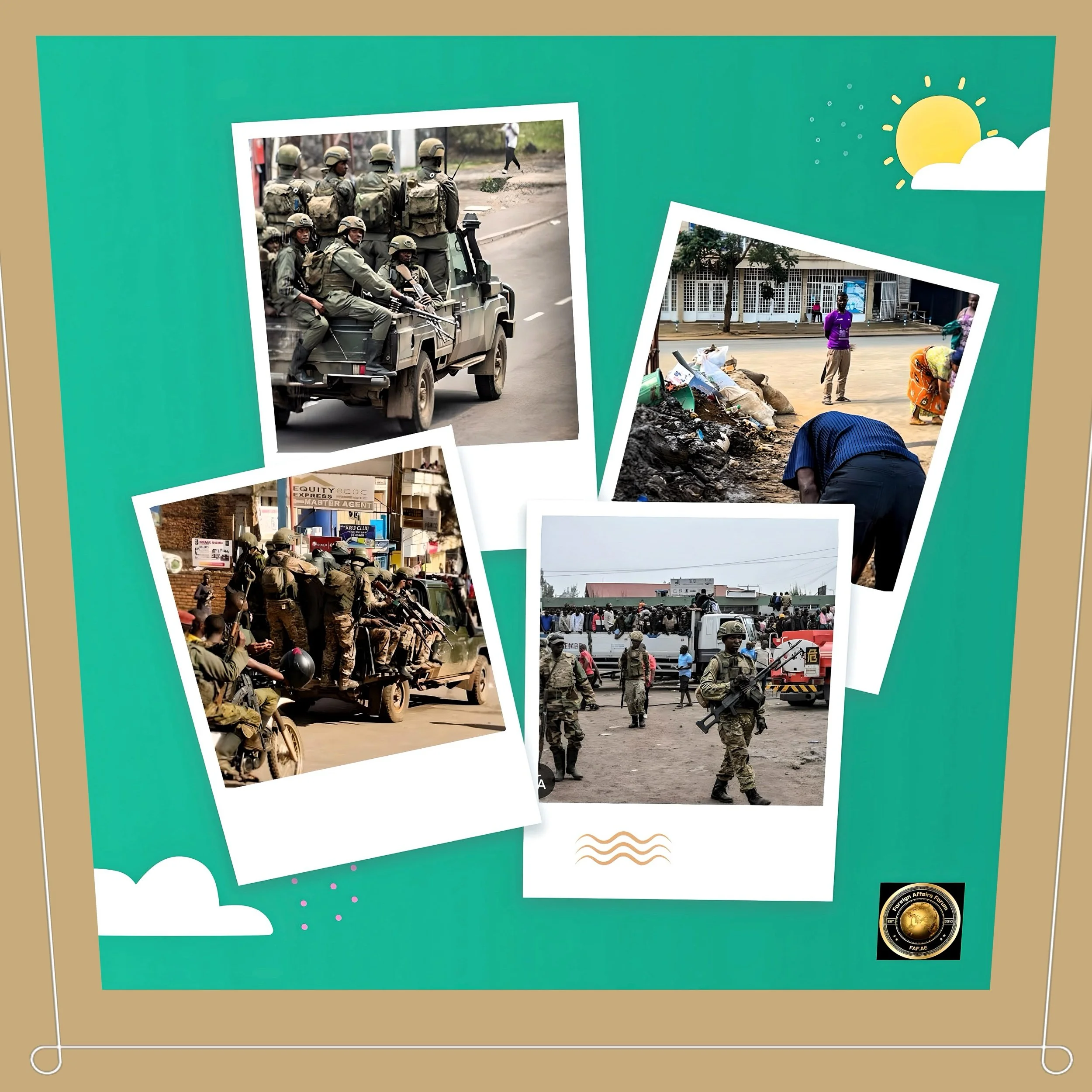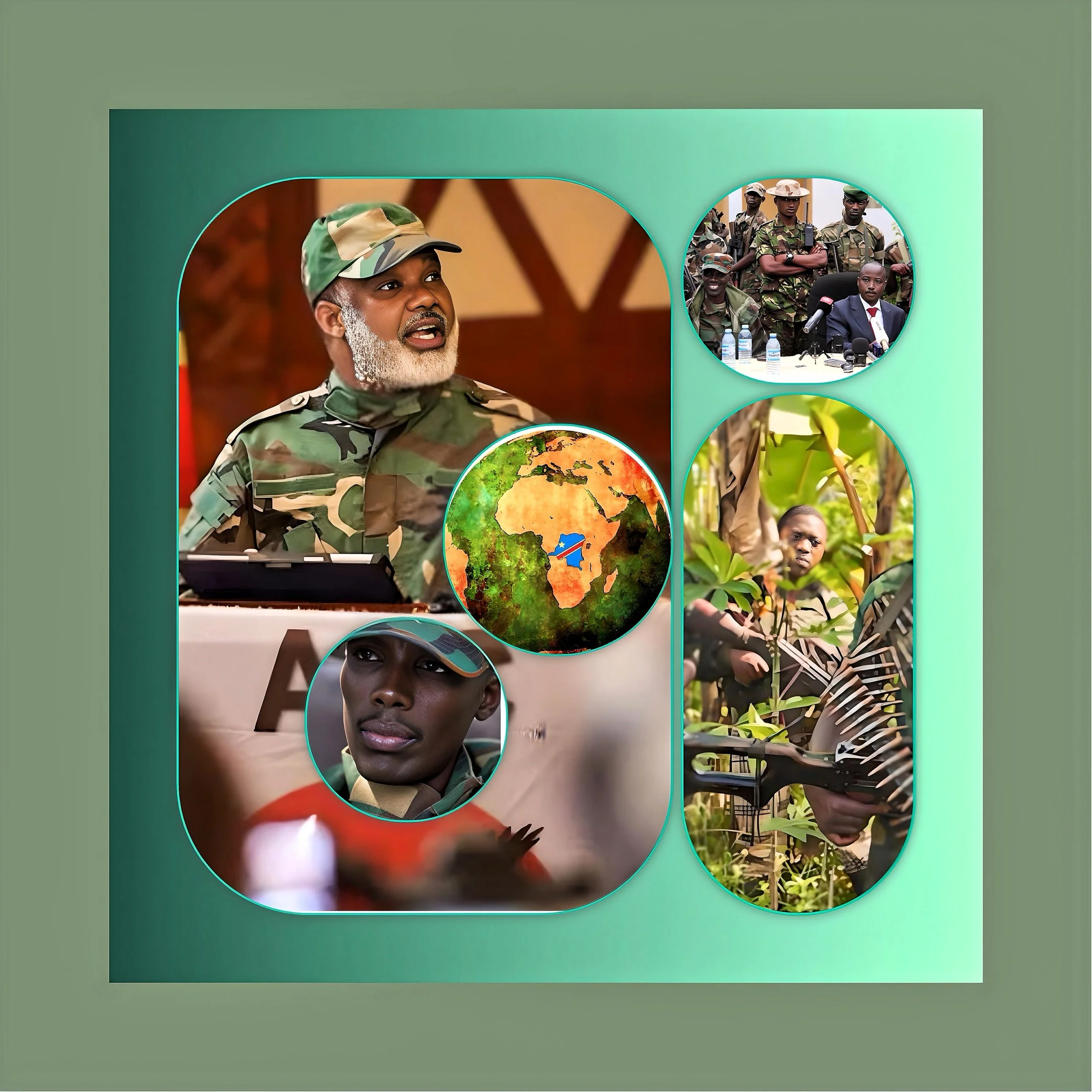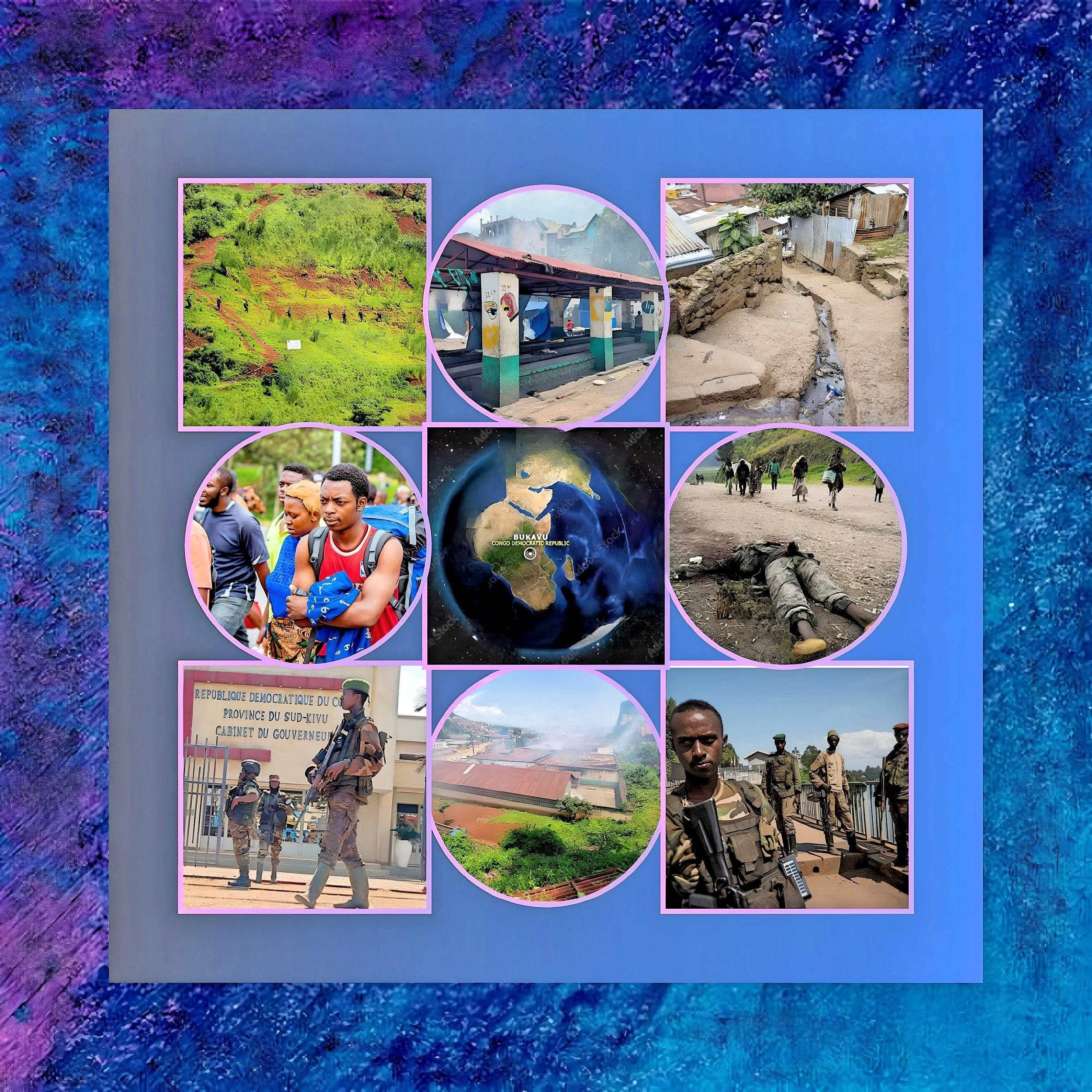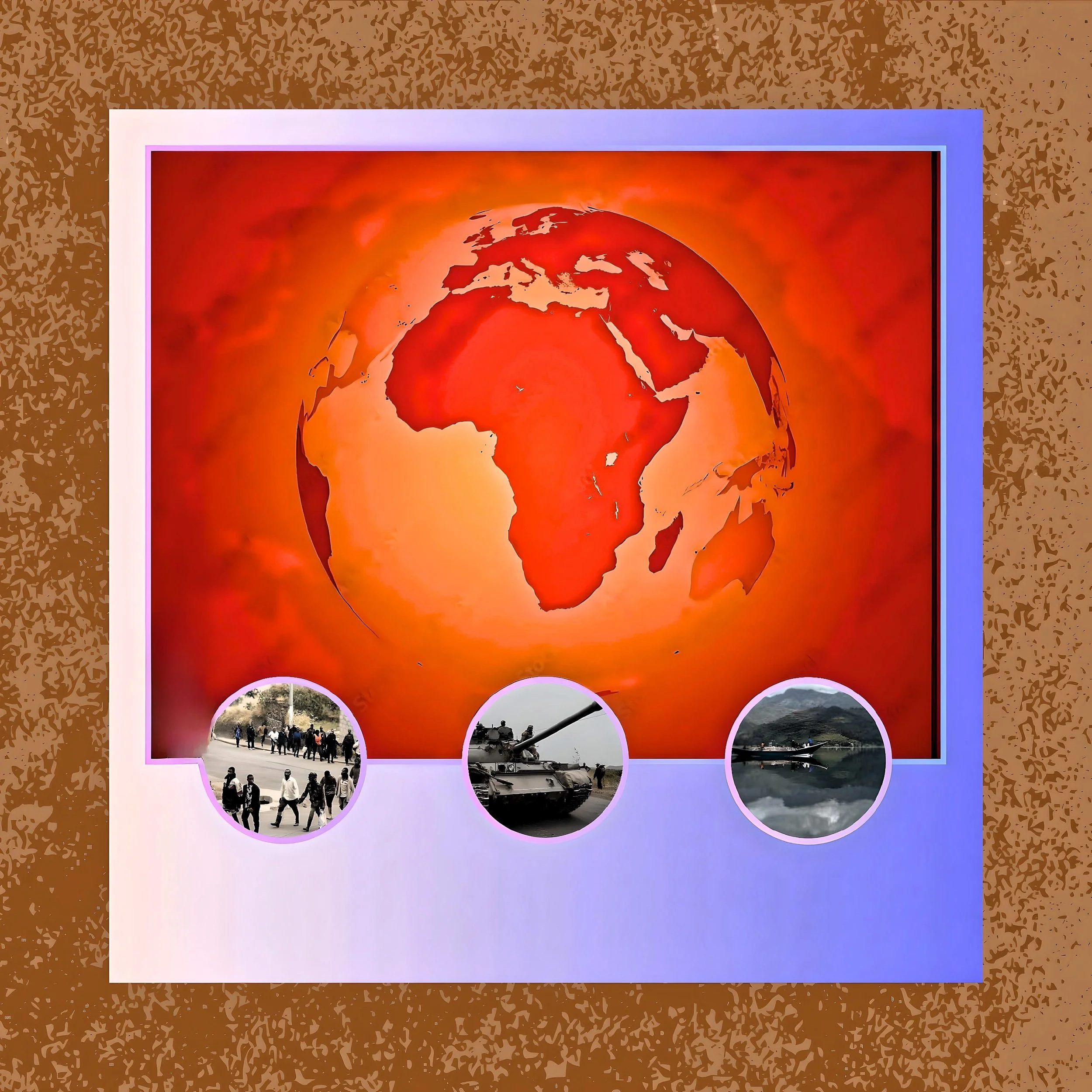The Escalating Conflict in the Democratic Republic of the Congo: April 2025 Update
Introduction
As of April 2025, the Democratic Republic of the Congo (DRC) faces a catastrophic convergence of intensifying conflict, humanitarian collapse, and regional instability.
The Rwanda-backed M23 rebel group’s territorial gains, coupled with systemic obstruction of humanitarian aid and failed diplomatic interventions, have plunged eastern provinces into a crisis reminiscent of the 1990s Congo Wars.
With over 7 million internally displaced persons (IDPs) and 20 million requiring urgent assistance, the international community struggles to address a disaster exacerbated by geopolitical rivalries and resource exploitation.
FAF analysis synthesizes the latest military, humanitarian, and political developments, underscoring the urgent need for coordinated action to avert further regional destabilization.
Military Dynamics: M23’s Expansion and Regional Entanglements
Capture of Goma and Bukavu
The M23’s capture of Goma and Bukavu in March 2025 marked a turning point in the conflict, granting the group control over eastern DRC’s economic and strategic hubs.
These cities, vital for trade routes and mineral exports, now serve as bases for the rebels’ push toward Kinshasa.
The Congolese government’s $5 million bounty on M23 leaders failed to curb their advance, highlighting the impotence of unilateral measures against a well-armed insurgency.
Rwandan and Ugandan Involvement
Regional dynamics mirror the 1998 “Great Africa War,” with Rwanda accused of supplying drones, artillery, and troops to M23, while Uganda deploys forces under the pretext of combating Allied Democratic Forces (ADF) and CODECO militias.
Analysts warn that Ugandan troop movements near Ituri risk reigniting historical tensions as both nations vie for influence over the DRC’s resource-rich east.
Resistance and Counterattacks
Pro-government Wazalendo militias launched counteroffensives in North and South Kivu, clashing with M23 near Lake Edward and Bukavu. However, these efforts lack coordination with the Congolese Armed Forces (FARDC), which remains fragmented and under-equipped.
Civilian accounts from Uvira describe rampant looting and killings by retreating FARDC units, further eroding public trust.
Humanitarian Catastrophe: Displacement and Deprivation
Record Displacement and Access Barriers
The conflict has displaced 3 million people since December 2024, with IDP camps around Goma dismantled under unsafe conditions. Over 1.2 million fled M23’s advance in North and South Kivu, many relocating multiple times as fighting shifts.
Humanitarian access is eliminated by M23 checkpoints extorting aid convoys and FARDC restrictions on cross-line deliveries.
The looting of 12 warehouses in Goma deprived 800,000 of food and medical supplies, while closed airports delayed critical airlifts.
Health and Protection Crises
A deadly triad of cholera, dengue, and measles outbreaks strains the 20% of health facilities still operational in conflict zones.
In Masisi Territory, 90% of clinics lack antibiotics or surgical supplies, forcing staff to reuse gloves and syringes.
Sexual violence has surged, with UNFPA reporting 1.5 million women at risk and 234,000 pregnant women lacking prenatal care.
Displaced adolescents in Burundi’s transit centers face forced marriages in exchange for food, a grim echo of past crises.
Cross-Border Spillover
Burundi hosts 67,000 DRC refugees as of March 2025, overwhelming its reception capacity. New arrivals describe harrowing escapes through M23-held territories, where men are conscripted, and women are subjected to rape.
The Burundi Inter-Agency Refugee Response Plan requests $24.3 million to address shelter shortages and cholera containment, yet only 30% is funded.
International Response: Funding Gaps and Diplomatic Deadlock
EU and UN Mobilization
The European Union pledged €100 million in 2025 aid, including a €40 million top-up after the April 4 ministerial roundtable.
Humanitarian Air Bridges delivered 44 tons of shelter kits to Masisi, with road convoys planned for hard-to-reach areas.
However, these efforts pale against the $2.6 billion Humanitarian Response Plan, which remains 60% underfunded.
Sanctions and Stalled Talks
Despite March 2025 EU sanctions on M23 leaders, the group continues procuring arms via Rwandan intermediaries and Libyan smugglers. Peace talks brokered by Angola collapsed after M23 rejected negotiations, demanding direct representation—a condition Kinshasa dismisses.
The African Union’s call for an “immediate cessation of hostilities” has gone unheeded, with both sides prioritizing territorial gains over dialogue.
Regional Implications: Toward a New Continental War?
Resource Exploitation and Proxy Conflicts
M23’s control of North Kivu’s gold and coltan mines funds its operations, with illicit exports routed through UAE-based traders. Conversely, FARDC-aligned elites profit from gum Arabic exports to Europe, entrenching economic incentives for prolonged war.
The Wagner Group’s alleged involvement in arming M23 adds a layer of globalized mercenary activity, complicating accountability.
Historical Parallels and Escalation Risks
The current conflict mirrors the 1998–2003 Congo Wars, which drew nine African nations into a proxy war over minerals. With Ugandan troops nearing M23 positions and Rwandan operatives embedded in rebel ranks, the risk of direct interstate clashes rises daily.
Civil society leaders in Beni warn that CODECO’s resurgence could open a northern front, further fracturing the country.
Conclusion
Pathways to Mitigation
Immediate Priorities
Enforce Arms Embargoes
Expand UN sanctions to target Rwandan and Ugandan entities fueling M23’s supply chain.
Decentralize Aid Delivery
Channel 40% of its funding is through local NGOs like Goma’s Emergency Response Rooms to bypass bureaucratic delays.
Revitalize Mediation
Appoint a joint AU-UN envoy to broker talks, including M23, to address grievances over Tutsi marginalization.
Long-Term Strategies
Resource Transparency
Mandate international audits of mineral supply chains, penalizing companies sourcing from conflict zones.
Accountability Mechanisms
Empower the International Criminal Court to prosecute commanders orchestrating sexual violence and forced conscription.
The DRC stands at a precipice
Without urgent, cohesive action, the conflict threatens to devolve into a continent-wide war with generational consequences. The world’s response in the coming months will determine whether 2025 becomes a year of reckoning or repetition.






